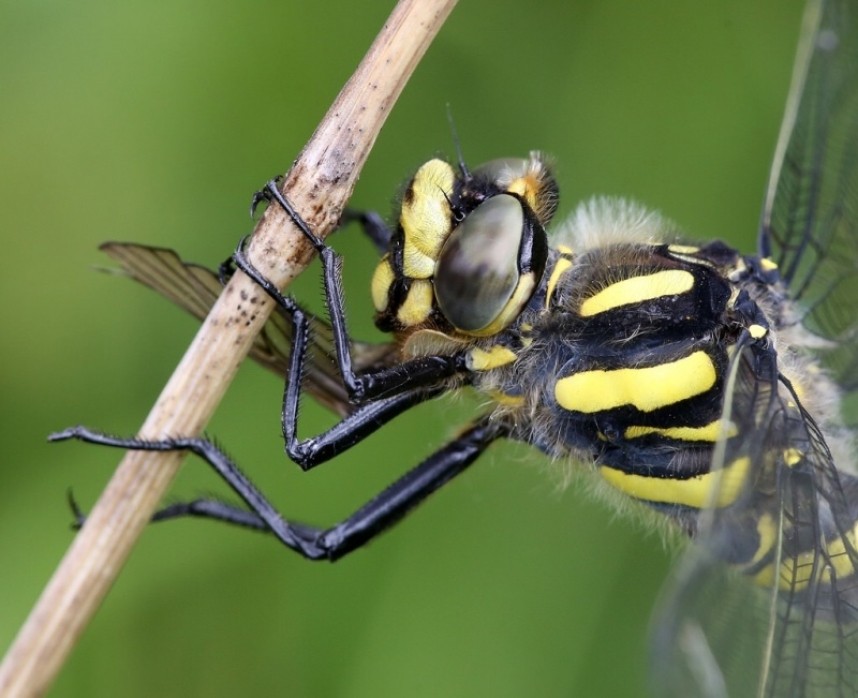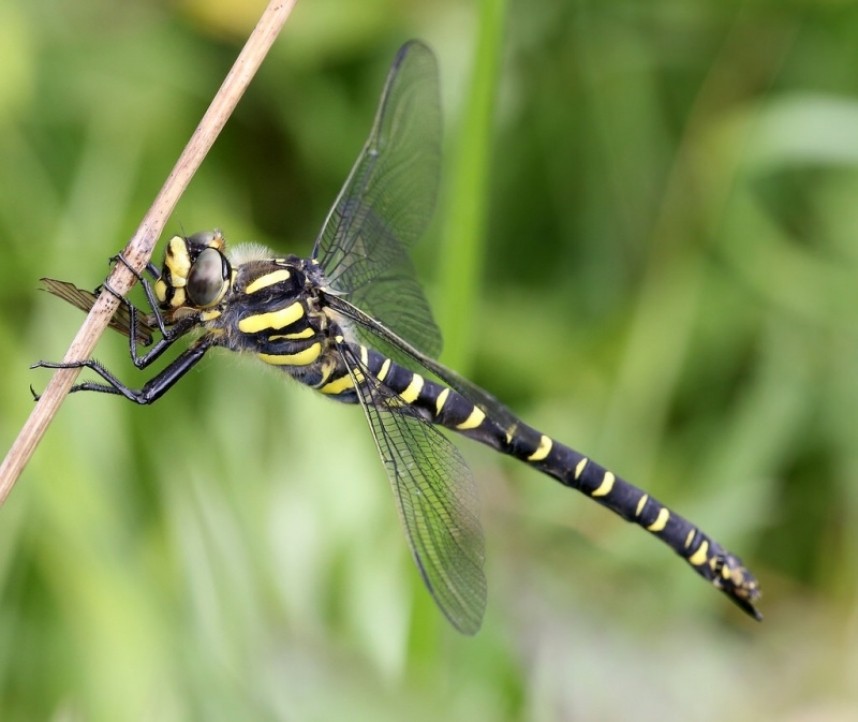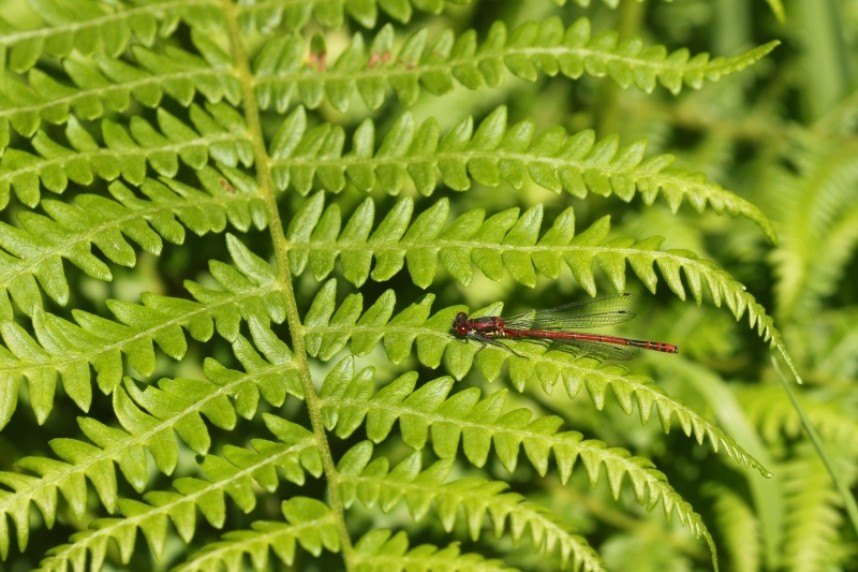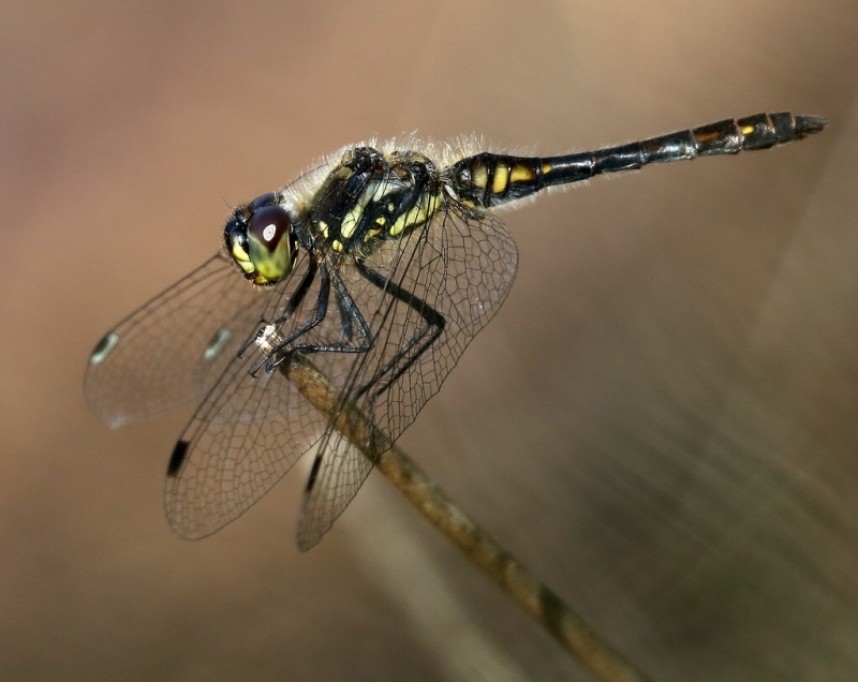Dragons and Damsels
‘Did you hear that? it sounded like flying tin foil’ A female golden-ringed dragonfly buzzed passed us at close range showing off her sparkling wings ‘Wow’ was the next word from the impressed wildlife enthusiast as she watched Britain’s largest dragonfly disappear across the purple heather.

Golden-ringed Dragonfly © Dan Lombard
July is a great month to lookout for dragonflies and damselflies (belonging to the order Odonata). The first thing to remember when searching for these species is to check how the wings are held. Damselflies hold their wings parallel to the body or abdomen. Dragonfly wings extend out from their body at right angles.

Golden-ringed Dragonfly © Dan Lombard
Different species are often associated with varying habitat and acidity of wetland pools. On heathland, forest edge and moorland look-out for the golden-ringed dragonfly. This magnificent insect is the only dragonfly in the UK belonging to the genus Cordulegaster. They are fearsome predators even as larvae (nymph) which can take 2-5 years to develop into the adult phase. During this time, they live partially buried in mud at the base of a pond.

Large Red Damselfly © Richard Baines
Golden-ringed dragonflies are hard to miss, but our only common all red damselfly; the large red is easy to overlook. The recent wet weather in June has provided new opportunities as previously dry forest ditches are now full of insect life. I found an overflowing ditch in Harwood Dale last week and counted over 50 large red damselflies. A study in 2008 found these damselflies react to chemical traces left by predatory dragonflies. When they detect danger, they forage less, staying motionless on a leaf.
The great thing about the North York Moors National Park is you don’t always have to visit nature reserves to find these dragonflies and damselflies. A walk along one of the many footpaths in sheltered valleys or along forest edges where there are wet ditches or ponds will provide many opportunities to see these and other species of Odonata.

Black Darter © Dan Lombard
Golden-ringed aren’t the only big dragon to look out for in the coming weeks. If you see a large dragonfly along a forest ride it could be a southern hawker. At the other end of the scale is our smallest and only all black dragonfly (males) the black darter. They prey on small flying insects and often perch at a look out. In a similar way to other species the head can turn through 180 degrees and the huge eyes, give them amazing vision so whichever way you turn they are watching you!



 Back to Blog
Back to Blog
